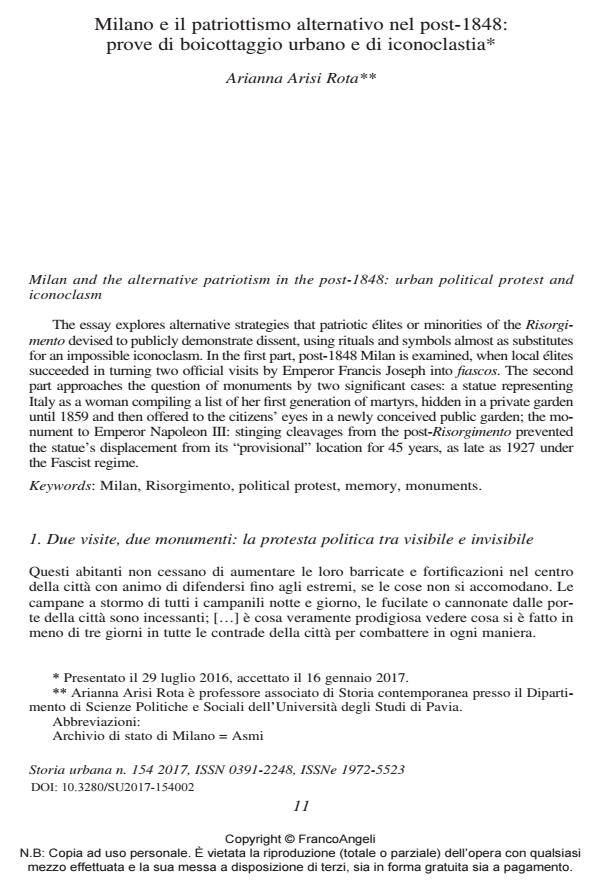Milan and the alternative patriotism in the post-1848: urban political protest and iconoclasm
Journal title STORIA URBANA
Author/s Arianna Arisi Rota
Publishing Year 2017 Issue 2017/154
Language Italian Pages 19 P. 11-29 File size 183 KB
DOI 10.3280/SU2017-154002
DOI is like a bar code for intellectual property: to have more infomation
click here
Below, you can see the article first page
If you want to buy this article in PDF format, you can do it, following the instructions to buy download credits

FrancoAngeli is member of Publishers International Linking Association, Inc (PILA), a not-for-profit association which run the CrossRef service enabling links to and from online scholarly content.
The essay explores alternative strategies that patriotic élites or minorities of the Risorgimento devised to publicly demonstrate dissent, using rituals and symbols almost as substitutes for an impossible iconoclasm. In the first part, post-1848 Milan is examined, when local élites succeeded in turning two official visits by Emperor Francis Joseph into fiascos. The second part approaches the question of monuments by two significant cases: a statue representing Italy as a woman compiling a list of her first generation of martyrs, hidden in a private garden until 1859 and then offered to the citizens’ eyes in a newly conceived public garden; the monument to Emperor Napoleon III: stinging cleavages from the post-Risorgimento prevented the statue’s displacement from its "provisional" location for 45 years, as late as 1927 under the Fascist regime.
Keywords: Milan, Risorgimento, political protest, memory, monuments.
Arianna Arisi Rota, Milano e il patriottismo alternativo nel post-1848: prove di boicottaggio urbano e di iconoclastia in "STORIA URBANA " 154/2017, pp 11-29, DOI: 10.3280/SU2017-154002